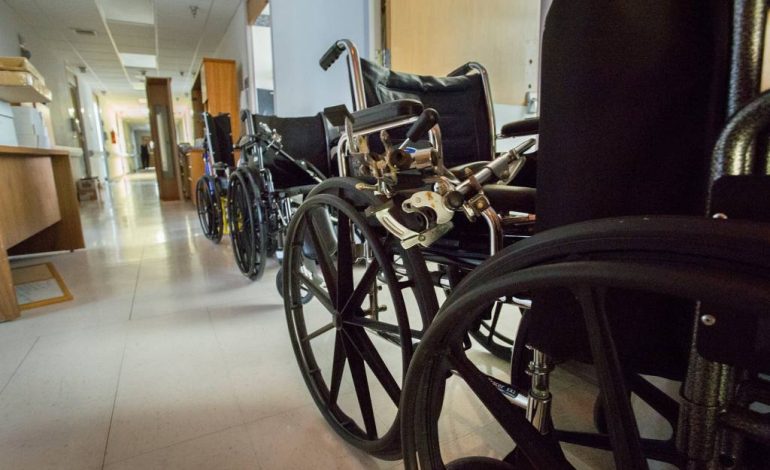Understanding the Quality of Care in Texas Nursing Homes
Thomas
- May 27, 2024
- 5 min read

Choosing a nursing home for a loved one is a decision that carries significant weight. For families in Texas, understanding the quality of care provided in nursing homes is essential to ensuring the safety, health, and well-being of their elderly relatives. The quality of care can vary greatly from one facility to another, which makes knowing what to look for all the more crucial. In this article, we will explore key factors that help determine the quality of care in Texas nursing homes, including staff qualifications, resident-to-staff ratios, medical services, and overall resident satisfaction.
Staff Qualifications and Training
The quality of care in any nursing home largely depends on the qualifications and training of the staff. It’s important to ensure that the facility employs licensed professionals such as registered nurses (RNs), licensed vocational nurses (LVNs), and certified nursing assistants (CNAs). These professionals should have specialized training in geriatric care, dementia care, and other areas relevant to elderly residents.
Beyond licenses and certifications, a good nursing home in Texas should also offer ongoing training for its staff. This allows caregivers to stay up-to-date with the latest care techniques, regulations, and best practices. If a facility is committed to continuous staff development, it shows a dedication to providing high-quality care. Prospective residents and families can ask the facility about their training programs and the specific qualifications of their caregivers.
At one website specializing in senior care advice, it’s suggested that families look for nursing homes that prioritize staff development, as well-trained caregivers are more likely to respond effectively to medical emergencies and provide compassionate day-to-day care.
Resident-to-Staff Ratios
Another important indicator of care quality is the resident-to-staff ratio. When there are too few caregivers for the number of residents, the level of care often declines. Residents may experience delays in receiving assistance with activities of daily living (ADLs) such as bathing, dressing, or eating, which can negatively impact their well-being.

Families should inquire about how many residents each caregiver is responsible for during different shifts. The lower the ratio, the more personalized and attentive the care is likely to be. Ideally, nursing homes should have a sufficient number of caregivers on each shift to meet residents’ needs without being overstretched. This is especially important during night shifts when facilities often reduce staff numbers.
By choosing a nursing home with an adequate resident-to-staff ratio, families can feel confident that their loved one will receive timely and appropriate care. A facility with well-maintained staffing levels is also less likely to experience caregiver burnout, which can further impact care quality.
Access to Medical Services
Access to comprehensive medical services is critical in any nursing home, particularly for residents with complex or chronic health conditions. In Texas, nursing homes should be equipped with on-site medical staff, including RNs or LVNs, who can monitor residents’ health and administer medications. Additionally, facilities should have relationships with physicians and specialists who visit regularly or are on call for emergencies.
Nursing homes that offer specialized services such as physical therapy, occupational therapy, and speech therapy provide residents with the opportunity to maintain or improve their functional abilities. This is especially important for those recovering from surgery, illness, or injury.
Families should also consider the availability of mental health services. Elderly residents are at higher risk for conditions such as depression, anxiety, and cognitive decline. Nursing homes that provide access to mental health professionals, including counselors and psychiatrists, can help address these issues before they escalate.
Cleanliness and Safety Standards
The overall cleanliness and safety of a nursing home can provide insight into the quality of care. A well-maintained facility with clean rooms, common areas, and dining spaces suggests that staff are attentive to both the physical environment and the health of the residents. Cleanliness is especially important in preventing the spread of infections and ensuring a hygienic living environment.
Safety standards are equally vital. Nursing homes should have safety protocols in place, such as handrails, non-slip flooring, and emergency call systems. Staff should also be trained to handle falls and other accidents swiftly and efficiently. Families can assess these factors by taking a tour of the facility, observing interactions between staff and residents, and asking about the home’s safety procedures.
Texas nursing homes are required to follow state regulations, but not all facilities uphold the same standards. This is why conducting thorough research and asking the right questions is essential when selecting a home for a loved one.
Resident Satisfaction and Family Involvement
Resident satisfaction is one of the most telling indicators of care quality. Nursing homes that foster a positive environment where residents feel comfortable, respected, and cared for will have higher satisfaction rates. Families can gauge resident satisfaction by asking current residents about their experiences during visits, reading online reviews, and reviewing state inspection reports.
Another key aspect is family involvement. Nursing homes that encourage open communication and collaboration between staff and residents’ families typically provide better care. This ensures that families are informed about their loved one’s health, treatment, and well-being, and it creates a supportive network for residents. When a nursing home values family input, it signals that the facility prioritizes the resident’s overall happiness and quality of life.
Conclusion
Understanding the quality of care in Texas nursing homes is critical when selecting the best environment for a loved one. By focusing on key factors such as staff qualifications, resident-to-staff ratios, access to medical services, cleanliness, safety standards, and resident satisfaction, families can make informed decisions about which facility is best suited to their loved one’s needs. Ultimately, the right nursing home will prioritize the well-being of its residents, providing a safe, nurturing, and supportive environment that enhances their quality of life.









